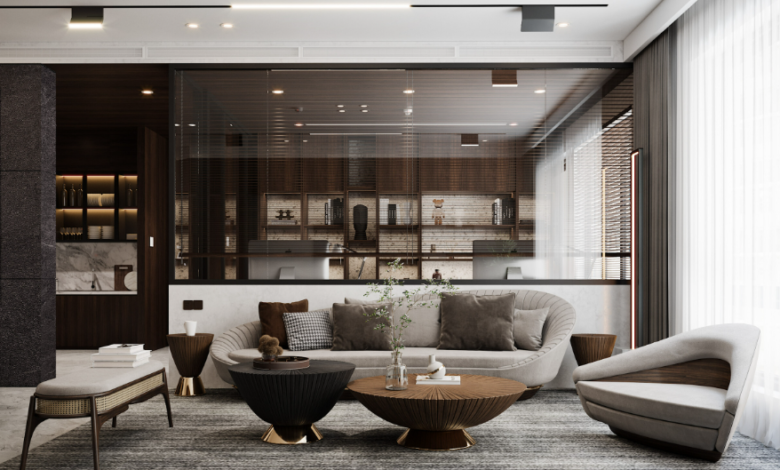The Evolution of Designer Furniture in Australia: How Contemporary Design is Reshaping Modern Living

The Australian design landscape has undergone a remarkable transformation over the past decade, with homeowners increasingly gravitating toward sophisticated, well-crafted pieces that reflect trends and distinctly Australian sensibilities. This shift toward premium home furnishings has established Australia as a significant player in the international design market, where discerning consumers seek furniture that combines aesthetic excellence with functional innovation.
The Rise of Australian Design Consciousness
Australia’s relationship with designer furniture has evolved from a primarily import-driven market to one that celebrates both international luxury brands and emerging local talent. This evolution reflects a broader cultural shift toward quality over quantity, where Australians are investing in fewer, better pieces that stand the test of time. The modern Australian home now serves as a canvas for personal expression, with carefully curated furniture collections that speak to individual taste and lifestyle aspirations.
The influence of Australia’s climate and outdoor lifestyle has played a crucial role in shaping furniture preferences. Designer furniture Australia now encompasses pieces that seamlessly transition between indoor and outdoor spaces, utilizing materials that withstand the country’s diverse weather conditions while maintaining their aesthetic appeal. This practical approach to luxury has become a defining characteristic of Australian design sensibility.
Materials and Craftsmanship: The Foundation of Quality
Contemporary designer furniture in Australia places significant emphasis on material quality and craftsmanship excellence. Local manufacturers and international brands alike have recognized that Australian consumers possess an understanding of construction techniques and material properties. This knowledge has driven demand for pieces featuring solid timber construction, premium metal finishes, and innovative composite materials that offer both durability and visual appeal.
The use of native Australian timbers in high-end furniture production has created a market segment that celebrates local resources while meeting international design standards. Pieces crafted from Tasmanian oak, Victorian ash, and Queensland maple have gained recognition not only for their beauty but also for their environmental sustainability credentials. This focus on responsible sourcing has become increasingly important to consumers who view their furniture purchases as long-term investments in both their homes and the environment.
See also: How Does Homeopathic Treatment for Skin Conditions Work?
The Role of Technology in Modern Furniture Design
Digital innovation has revolutionized how Australians discover, evaluate, and purchase premium furniture. Virtual showrooms and augmented reality applications now allow consumers to visualize how designer pieces will appear in their specific spaces before making significant investments. This technological integration has made designer furniture Australia more accessible to a broader audience, removing traditional barriers between consumers and high-end design.
Advanced manufacturing techniques have also enabled local producers to compete with international brands by offering customization options that were previously unavailable or prohibitively expensive. Computer-controlled cutting, precision joinery, and custom finishing capabilities have elevated Australian furniture production to world-class standards, creating opportunities for local designers to establish global reputations.
Sustainable Luxury: The New Standard
Environmental consciousness has become inseparable from luxury in the Australian furniture market. Consumers increasingly expect designer pieces to meet stringent sustainability criteria while delivering exceptional aesthetic and functional performance. This expectation has driven innovation in eco-friendly manufacturing processes, recycled materials utilization, and end-of-life recyclability considerations.
The concept of circular design has gained particular traction in designer furniture Australia, where pieces are created with their entire lifecycle in mind. This approach considers not only the environmental impact of production but also the potential for refurbishment, repurposing, and eventual recycling. Luxury brands that embrace these principles are finding strong resonance with Australian consumers who view sustainable practices as essential rather than optional.
Investment Value and Market Trends
Designer furniture has increasingly been viewed as a form of investment in Australia, with certain pieces appreciating in value over time while providing daily functional and aesthetic benefits. This investment perspective has encouraged consumers to research designers, understand market trends, and make informed decisions based on personal preference and potential future value.
The rental market has also adapted to accommodate the growing demand for high-quality furnishings, with luxury furniture rental services allowing consumers to experience designer pieces before making purchase commitments. This approach has democratized access to premium furniture while supporting the overall growth of the designer furniture Australia market.
Looking Forward: The Future of Australian Design
As we move forward, the Australian designer furniture market continues to mature. Emerging designers are gaining international recognition while established brands are expanding their Australian presence in response to growing demand. The integration of smart technology, sustainable practices, and customization capabilities suggests that the future of luxury furniture in Australia will be characterized by even greater innovation and personalization.
For retailers like Luxe Decorum, this evolving landscape presents opportunities to connect discerning consumers with exceptional pieces that reflect both global design excellence and Australian lifestyle preferences. The continued growth of designer furniture Australia represents not just market expansion but the maturation of a design culture that values quality, sustainability, and individual expression in equal measure.




